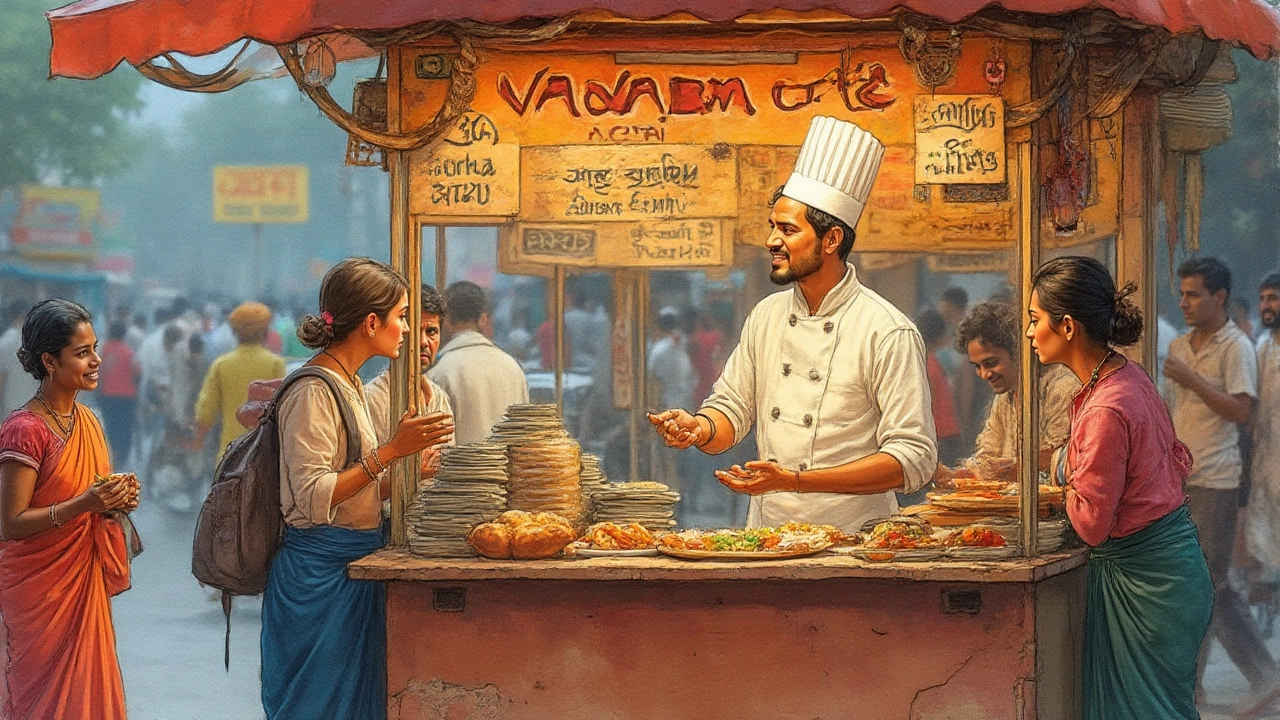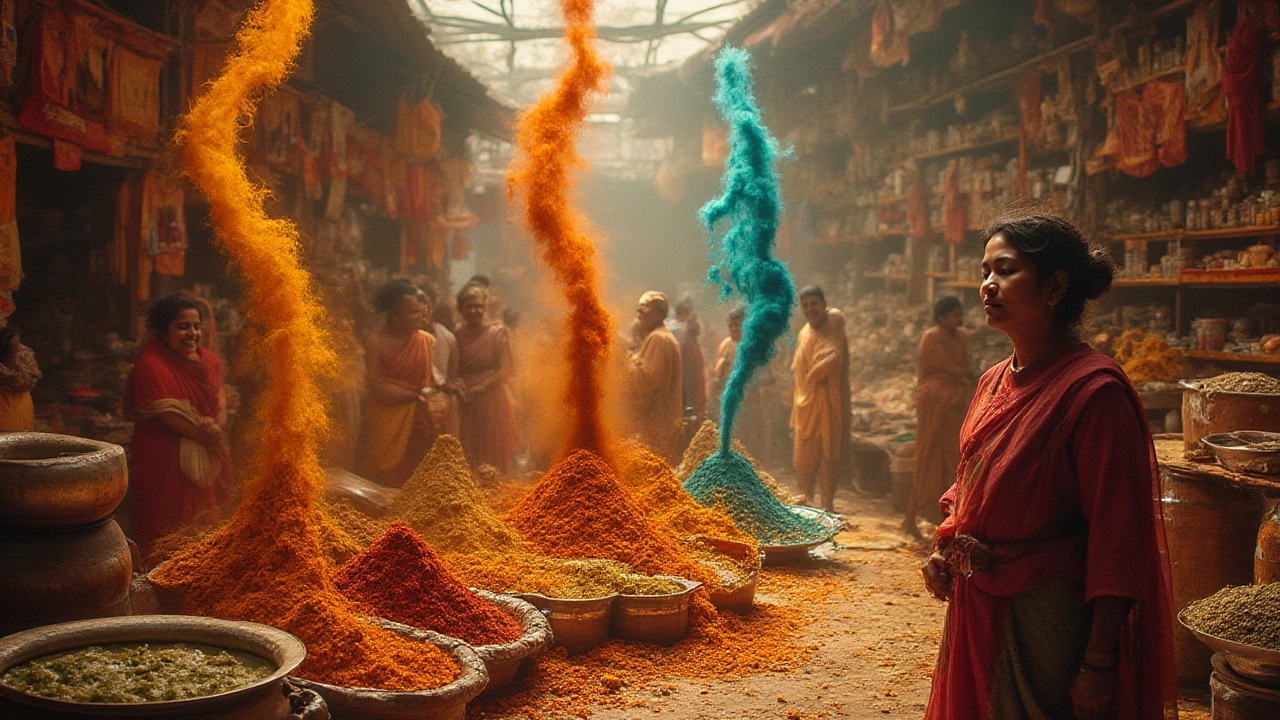Ask ten people what India’s national dish is, and you’ll probably get ten different answers. No surprise—this is a country where flavors change every hundred miles and family recipes are passed down like sacred secrets. The quest to find ‘the’ national dish is more like trying to pick your favorite star in the sky. There are too many, each with their own story and sparkle.
Is There an Official National Dish of India?
Let’s get this out of the way: India, despite its rich food culture, does not have an officially declared national dish. Nope, there’s no government notification listing chicken tikka masala or biryani as the culinary flagbearer. The Ministry of Tourism and the Food Safety and Standards Authority have both steered clear of crowning a single meal as India’s signature. Why? It’s simple. India’s food scene is probably the world’s most diverse, with over twenty states, over two thousand ethnic groups, and more than 720 languages scribbling up unique food stories. One thali fits all? Not happening here.
That said, certain dishes get nominated for the imaginary title again and again—think biryani, dosas, butter chicken, dal, and even khichdi. Back in 2017, rumors swirled about khichdi being declared India’s national dish after it starred at the World Food India event. Social media buzzed, debates flared. But offical sources shot the idea down; khichdi, a beloved comfort food cooked from rice and lentils, was promoted as a symbol of unity, not as a national dish. Looks like the spot is still up for grabs.
Travel across India, and you’ll spot how different regions push forward their own heroes. Punjab calls for butter chicken and makki di roti, West Bengal brings forth macher jhol (fish curry), and Rajasthan might argue for dal baati churma. Even within states, cities carve out niches. Lucknow wants credit for its galouti kebab, while Hyderabad flames with pride over its biryani. Andhra Pradesh’s spicy chicken curry could blow your socks off. See the problem?
Yet, it’s the love for food that unites Indians. One fun fact: Indians reportedly consume up to $50 billion of rice each year, and India is ranked the highest consumer of pulses in the world, with annual average consumption exceeding 24 million metric tons. That hints at a shared palate, even if daily menus are wildly different. Rice and lentils are common ground—from idli and dosa in the south to dal chawal in the north.
“What’s India’s national dish?” isn’t just a tricky question—it’s a window into its layered culture. Each bite tells you about soil, seasons, noisy markets, and centuries of migration. A culinary melting pot refuses to be reduced to one flavor. That’s cool, right?

India’s Most Loved Dishes (And Why Curry Gets All the Hype)
If there were a popularity contest, curry might take the crown—or at least the global spotlight. The thing is, ‘curry’ isn’t even a native term in India. It’s more of a British catchall, tossed over a vast range of spiced gravies and stews. In a real Indian kitchen, cooks call them sabzi, jhol, salan, korma, or something else entirely.
But, thanks to colonial history and restaurant menus abroad, curry is how the world recognizes Indian flavor. It’s often seen as the face of Indian food. Back in 2001, British Foreign Secretary Robin Cook called chicken tikka masala “a true British national dish”—that’s how hard Indian flavors landed on the global map. Ironically, chicken tikka masala is said to hail from Glasgow, Scotland, where a cook added tomato soup and cream to appease local diners. Authentic? Borderline. Popular? Absolutely.
Flip through India’s home kitchens, and you’ll find dal (lentil stew) simmering in nearly every household—north to south, east to west. That’s why dal, in its many forms, is often pitted as a real candidate for national dish status. Whether it’s creamy dal makhani, soupy sambar, or rustic dal fry, this humble dish takes different shapes based on where you are. It’s nutritious, easy on the stomach, and loved by both vegetarians and meat-eaters.
Let’s not forget rice and wheat. Nearly every state puts its own spin on these staples. North India rolls out rotis and parathas, while the south lays out idlis and dosas. And then there’s biryani—a dish that needs no introduction. In Hyderabad, it’s saffron-scented with marinated meat, while in Kolkata, potatoes enter the mix in a milder, fragrant style. Biryani sales spiked by 68% on India’s leading food delivery platform between 2018 and 2023. Safe to say, it’s a heavy favorite for festive feasts, family reunions, and, honestly, midnight cravings.
Street food deserves a salute too—pani puri, samosa, vada pav, chole bhature. Everyone has a local vendor they swear by. The thing about Indian food is that it’s as much about where you find it, who cooks it, and the stories behind each plate as it is about the recipe itself.
And here’s a quirky bit: in 2022, a survey by the National Restaurant Association of India showed that over 42% of Indians eat at least one meal outside their home every week. That’s a lot of chances for taste buds to get adventurous—and for new “favorite dishes” to be crowned.

How Indian Food Became a Culinary Powerhouse (And Tips To Try at Home)
It’s not only the number of spices—India uses over 40 regularly—but how they are roasted, ground, mixed, and paired. Take garam masala, a fragrant blend, or asafetida, a funky-sulfurous favorite. Indian cooks layer flavors like artists blend paints. If you’ve ever eaten a curry with a depth that knocks your socks off, chances are you’re tasting a family tradition polished through generations.
Foreign influences run deep. Persians brought in pilafs, the British added their own twists, and the Portuguese delivered potatoes, tomatoes, and chilies. All these got smoothly folded into the vast Indian repertoire. This blend is what gives modern Indian cuisine its punch. Remember, Indian-Chinese is a thing, too—a whole universe of Manchurian and chili paneer that started in Kolkata’s Chinatown.
Ready to taste more? Don’t be shy—Indian food is easier to try at home than you’d think. A simple dal tadka can be whipped up with yellow lentils, onions, tomatoes, turmeric, and a tempering of cumin and garlic sizzled in butter or ghee. For rice, nothing beats a fragrant jeera rice—whole cumin gets crackled in hot oil, then rice and water join in for a warm, nutty side. If your spice tolerance is low, start with comfort classics like aloo gobi or egg curry. These are satisfying, mild, and an easy entry to the world of spice.
Don’t forget the sides—fresh chutneys, cooling raita (yogurt with cucumber), and those irresistible papads. If you’re feeling adventurous, make your own masala blends. Toast cumin, coriander, cloves, cinnamon, and cardamom in a dry pan, then grind with a little nutmeg. It makes any stew sing.
For next-level flavor, try a slow-cooked biryani, layering marinated meat or veggies with rice and fried onions. Or roll out fresh chapatis (whole-wheat flatbreads) on a hot skillet—they take practice, but you’ll want to brag when you nail the puff.
Before you get hungry, here’s a fact you’ll want to chew on. According to the Food and Agricultural Organization, India is the world’s largest producer, consumer, and exporter of spices, with over 75 varieties produced in the country. No wonder the whole world wants a piece of its culinary genius.
| Popular Indian Dish | Region | Main Ingredient(s) | Fun Fact |
|---|---|---|---|
| Biryani | Hyderabad, Kolkata, Lucknow | Rice, meat or veggies, spices | Biryani is ordered every 5 seconds on some food apps during festivals. |
| Butter Chicken | Punjab | Chicken, tomato, butter, cream | The dish was invented by accident to use leftover tandoori chicken. |
| Masala Dosa | Karnataka (South India) | Rice, lentil, potato | The world's longest dosa measured 49 feet in Mysore, 2019. |
| Dal Makhani | North India | Lentils, butter, cream, tomatoes | Made with whole black lentils; slow-cooked overnight for depth. |
| Khichdi | Pan-India | Rice, lentils, mild spices | Praised as baby food, comfort food, and even food for the sick. |
So, does India have a national dish? Not officially. But that’s probably a good thing—the huge variety is what makes Indian food irresistible. Try a bunch, see what makes your mouth water, and don’t worry about picking just one favorite. India sure doesn’t.
